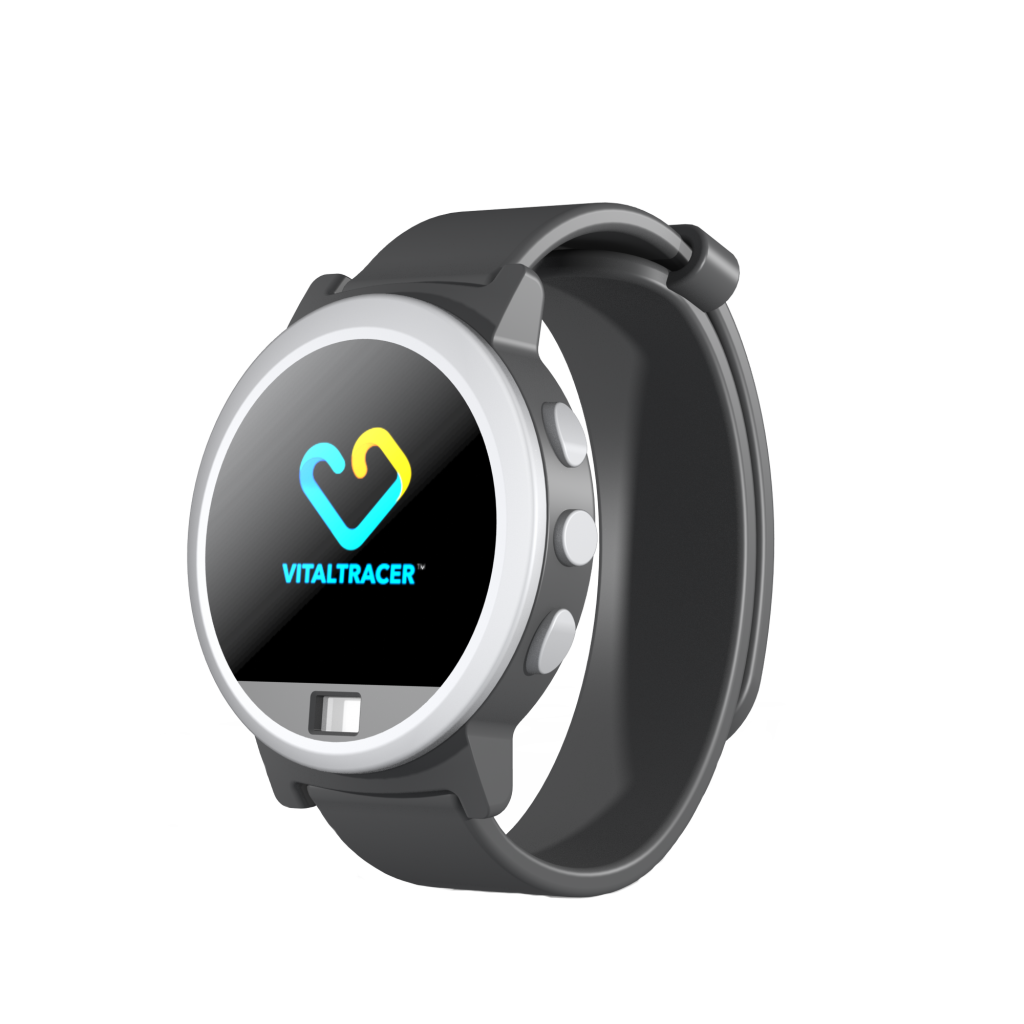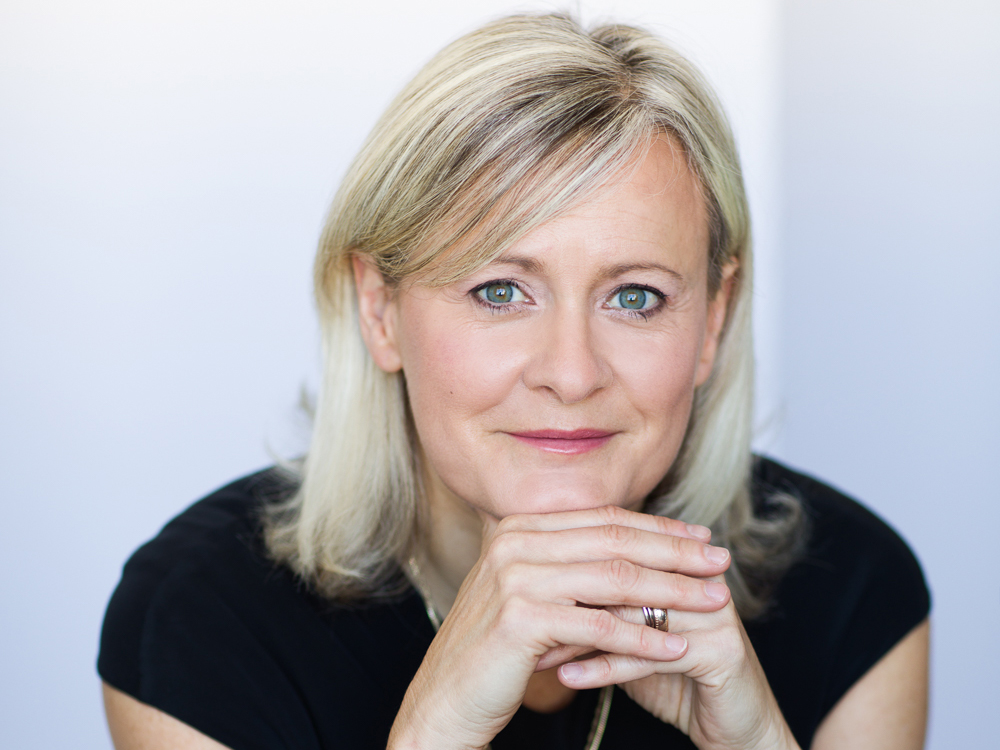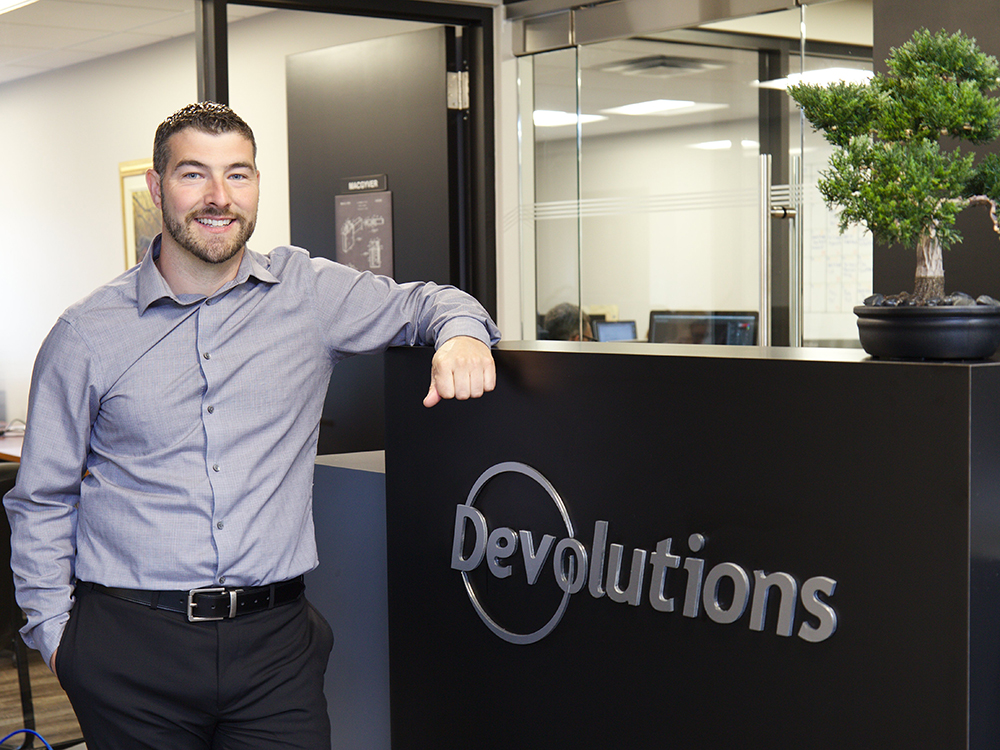
VitalTracer: Health watch
Azadeh Dastmalchi’s Story
Azadeh Dastmalchi’s doctoral research became an innovative company that could revolutionize the way we track the health of a range of vulnerable patients and populations thanks to the smart watch she developed, which is able to capture all types of data in real time. Here’s a portrait of a true innovator.
The VitalTracer story goes back to 2010, the year Dastmalchi’s father was diagnosed with high blood pressure. He became ensnared in a routine he would often forget to follow and which involved using a device that applied an unpleasant amount of pressure on his arm. Not only did he never get used to handling the equipment for measuring his arterial pressure, but he was not reliable about writing down the results of the measurements. Dastmalchi, who had just started a master’s in biomedical engineering at the University of Ottawa, saw in this situation an excellent problem for exploration. “I said to myself that it would be interesting to develop a type of device that didn’t require the use of an armband.”
The beginning
Her first attempt at tackling the problem as a student was to use optic sensors. Her readings on the subject led her to become interested in artificial intelligence (AI) as a possible avenue to explore. In 2012, an initial version of her system already made use of AI. However, the older medical specialists around her at that time were not too crazy about new technology and had a preference for devices that had already proven themselves. Dastmalchi couldn’t find anyone at the university who believed the technology had a future and was truly interested in paying it any attention. To make up for this lack of openness, she convinced a younger, more innovation-friendly supervisor to take her on as a master’s student. In 2014, when she obtained her master’s degree, she had a proof of concept for her idea in hand.
At this point the project seemed so promising that Dastmalchi’s supervisor invited her to continue her research at the doctoral level, and even helped her get a grant to encourage her to continue her work. At the same time, a friend of Dastmalchi’s, who had started a business and saw enormous potential in her research project, began encouraging her to transform her idea into a business. So she continued her studies with a double goal: in entrepreneurship and in biomedical engineering. “So I learned how to draft a business plan, a business model… Everything, actually. My familiarity with entrepreneurship was only in my background, since I grew up in a family that had two entrepreneurs.”
In 2018, Dastmalchi moved to Montreal and was accepted into McGill University’s X-1 accelerator. “That was when my entrepreneurial venture really started,” she confirms enthusiastically. The 10-week program she completed in 2019 required her to present her project in various cities in a number of countries. “As part of the X-1 program, you had to do a presentation every day. I learned public speaking, to put myself out there. Now giving presentations in front of an audience is part of my DNA.”
The implementation
 Dastmalchi and her partner and co-founder, Zahra Zangenehmadar, experienced some difficult initial approaches to the device. Basically, their high-tech watch, called VTLAB, was constantly being compared to the Apple Watch. It was hard for Dastmalchi to prove her product’s real advantages, which had little appeal to investors. So the entrepreneur and young mother rolled up her sleeves to show the difference between her product and those made by Apple and Samsung. To accomplish this, she followed the example of other young, growing companies in the medical sector, such as Imagia.
Dastmalchi and her partner and co-founder, Zahra Zangenehmadar, experienced some difficult initial approaches to the device. Basically, their high-tech watch, called VTLAB, was constantly being compared to the Apple Watch. It was hard for Dastmalchi to prove her product’s real advantages, which had little appeal to investors. So the entrepreneur and young mother rolled up her sleeves to show the difference between her product and those made by Apple and Samsung. To accomplish this, she followed the example of other young, growing companies in the medical sector, such as Imagia.
Read about Imagia’s path to success.
First, the entrepreneur discovered that by adding more sensors and developing new algorithms, her watch could measure and analyze all kinds of vital signs and distinguish itself from products intended for use by the general public. Second, the company established a system that enabled hospitals to store data in the cloud. This distinctive offer proved to be quite attractive, particularly in Canada, where institutions have devoted a lot of effort to protecting personal data. Starting from this idea, the VitalTracer team have continued to refine their minimally viable product, which has been sold to a few researchers at the University of Ottawa who are interested in the raw data signals the device produces, a data stream not provided by Apple’s device.
2020 and beyond
Then the pandemic arrived. Due to the unprecedented research efforts undertaken to tackle COVID-19, 500 pre-orders for watches were processed by VitalTracer this year, and another thousand for 2021. Since these researchers often want to analyze a panoply of biomarkers such as oxygen saturation level, heart rate or skin temperature, the VitalTracer watch now has an undeniable advantage compared to its competition.
For the moment the VTLAB watch is only available to researchers, given the B2B business model adopted by VitalTracer. However, the company is in the midst of developing a secondary market amongst old age residences. As of the fall of 2020, VitalTracer’s technology is awaiting approval by Health Canada and the FDA, a process which should continue for the next few months, but the device remains available for academic research.
Female entrepreneurship
Dastmalchi, who is expecting her second child during this pandemic year, is full of joy as well as apprehension due to her current situation. “Entrepreneurship has always been very exciting and gratifying to me. This period has been both very dynamic and very stressful because of all the responsibility related to the pre-orders.” Production and procurement of certain components have been compromised or slowed down due to the pandemic, and that’s not including other glitches the co-founders have encountered—both partners are feeling the pressure. Yet their technology could play an important role in COVID-19 research since their watch can serve to both detect early symptoms and track recovery.
In the near future, Dastmalchi will focus on the growth of VitalTracer in the company’s first two target markets, Canada and the United States. She intends to wait for the end of 2020 before launching the next phase of her company’s development.
VitalTracer in Numbers:
6: Number of people on the VitalTracer team
2: Number of countries in which the company is active
1,500: Number of pre-orders as of the fall of 2020


